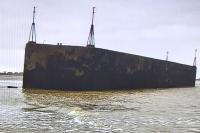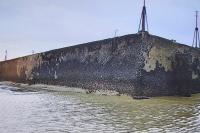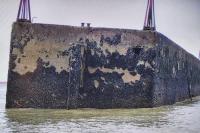Mulberry Harbour
Part of one of the harbours is visible at low tide off Littlestone. It survives remarkably intact and is now an Ancient Scheduled Monument.
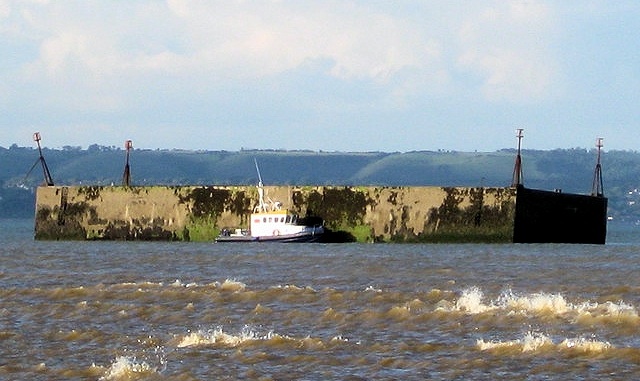
Mulberry Harbour off Littlestone (ack.29)
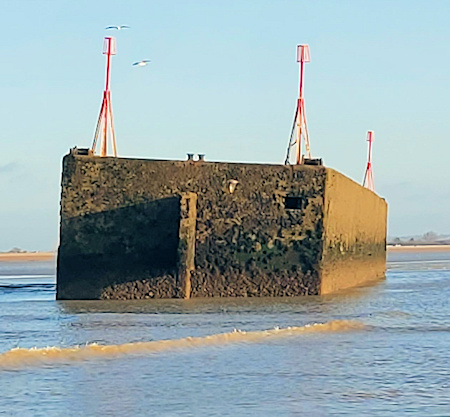
Rearview of the Mulberry Harbour more photos
The harbour was built in 1943-4 from Phoenix caissons, floatable breakwater components which effectively created a mobile port facility, designed to sink or float as necessary. Two prefabricated or artificial military harbours were taken in sections across the English Channel from Britain with the invading army and assembled off the coast of Normandy.
As part of the D-Day invasion of France in 1944, and they were used by the Allies to land troops and arms at Normandy as part of Operation Overlord.
Its location, stuck in sand and silt on the sea floor off Littlestone-on-Sea, illustrates the logistical problems involved in the invasion, as it remains where it was 'parked' prior to D-Day after it proved impossible to re-float and tow it across the English Channel.
Detail
The caissons were constructed by civil engineering contractors at various sites around the coast of Britain. 146 caissons were originally constructed (eventually a total of 212 were produced) and it was estimated that they required 330,000 cubic yards of concrete, weighing nearly 600,000 tons and 31,000 tons of steel.
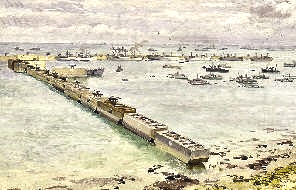
Mulberry Harbour, Arromanches Normandy Landing, June 1944
© National Maritime Museum
On completion, the caissons were towed to sites at Selsey or Dungeness where they were sunk, or ‘parked’ on account of a lack of sheltered mooring sites because of other priorities in the naval build-up. The parking of the caissons had been opposed by some who were worried about damage resulting from their coming to rest on an uneven seabed.
The caissons were later raised and towed by tug across the Channel. The example at Littlestone remains where originally parked, the navy having been unable to refloat it, probably because of damage to the hull when it was sunk, as had been feared.
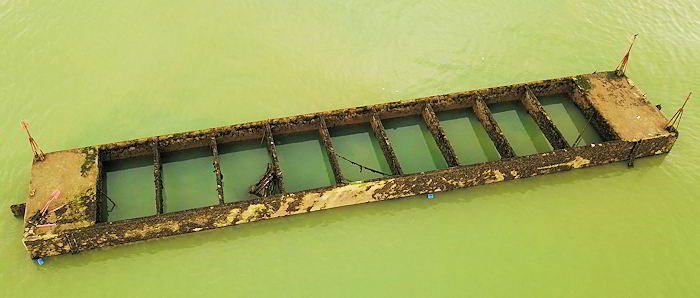
Aerial View of the Mulberry Harbour at Littlestone
English Heritage's Ancient Scheduled Monument listing describes the harbour at LIttlestone:
'The monument comprises a single Phoenix caisson, resting on the sea bed and exposed at low tide. It is approximately 200 ft (61m) in length, 32 ft (10m) wide.
The height is unclear from current information but, depending on the type of caisson, will be between 24 and 60ft high (7-18m). It is constructed of a steel framework with concrete base and walls around 0.3m thick. The interior is divided into nine sections, open to the sky.
These are further divided by a spine wall creating 18 square cells. Some of these retain their diagonal steel tension bars. Later navigation lights are mounted at the four corners on steel posts.
Its location, stuck in sand and silt on the sea floor off Littlestone-on-Sea illustrates the logistical problems involved in the invasion, as it remains where it was 'parked' prior to D-Day after it proved impossible to re-float and tow it across the English Channel.'
The harbour at Littlestone is one of only six known examples of Phoenix caissons in British waters. The others can be found in Portland Harbour, Dorset, (two caissons listed Grade II) Shoebury Ness, Essex, (scheduled) Langstone Harbour, Portsmouth and off Pagham, West Sussex.
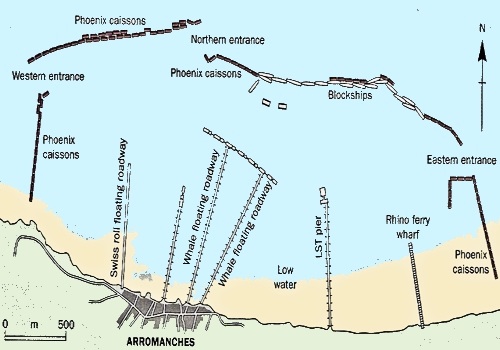
Mulberry Harbour at Arromanches, France, June 1944
Photo Gallery of the Mulberry Harbour in 2011
Photos of the Mulberry Harbour in 2011 when on a 0.2 low water it exposed the towing capstans on the landward side and the holes that enabled the caisson to submerge by allowing the water to enter the bottom these are now completely covered over by silt the water will still be able to enter via the seaward side holes.
Photos courtesy of Stephen Wilson NB Click on a picture to see it enlarged in a slideshow
More Photos of Mulberry Harbours
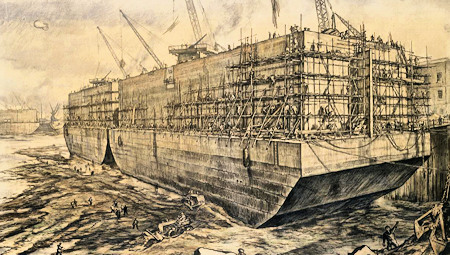
Building of Caissons in 1943/4
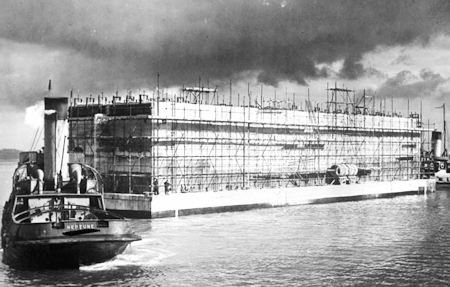
Caisson Being Towed 1944
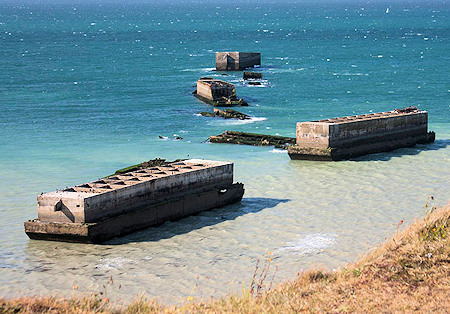
Derelict Caissons off the French Coast


















